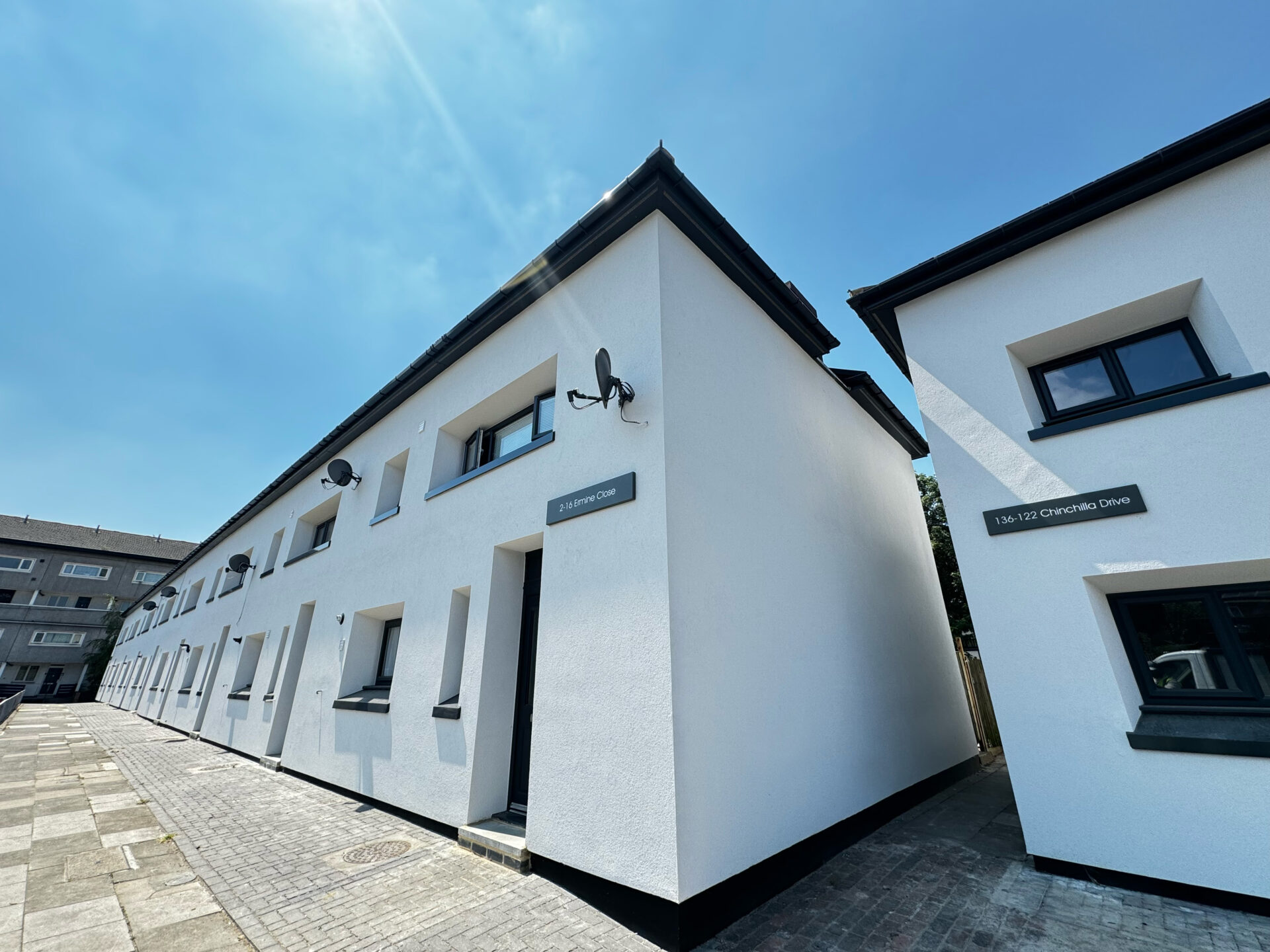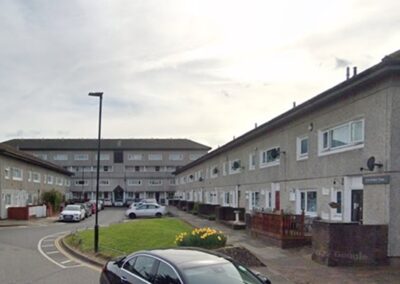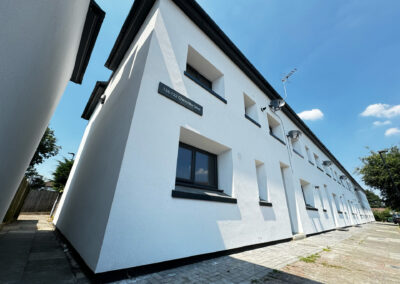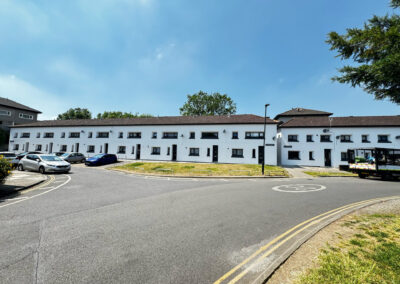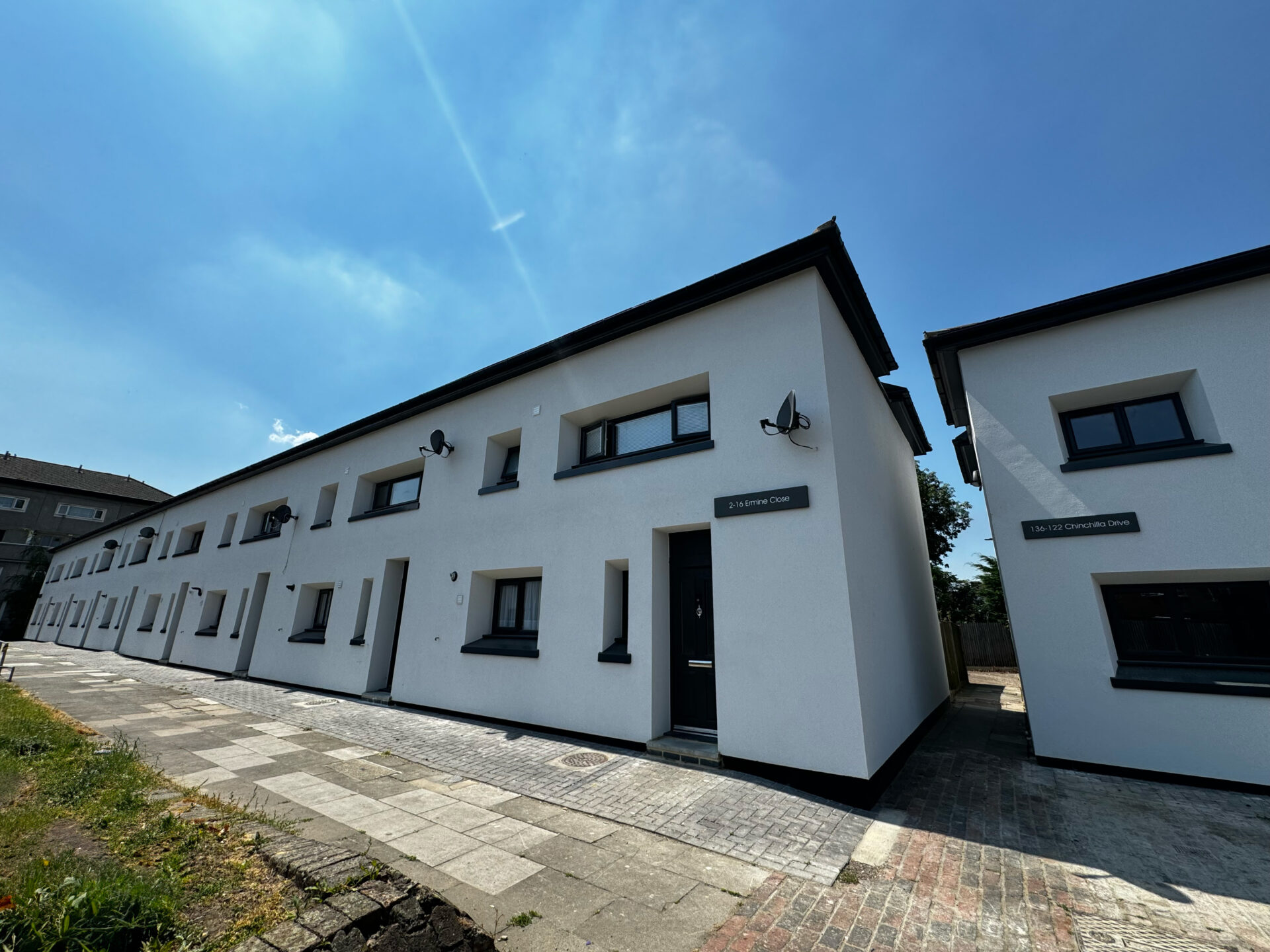INCA Case Study: The Meadows Estate, Hounslow
The Meadows Estate, Hounslow
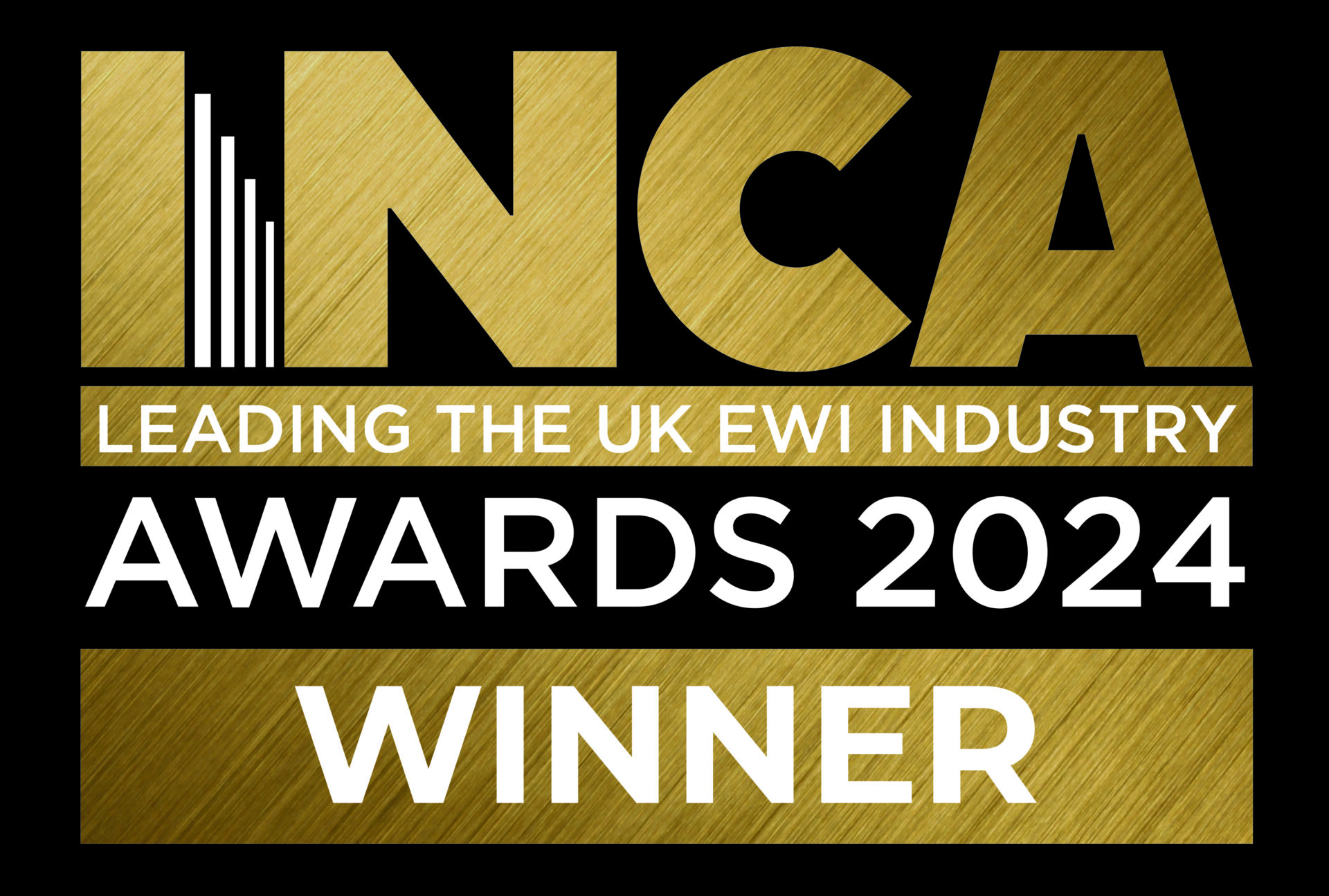 Project Type: Refurbishment
Project Type: Refurbishment
Building Type: Low Rise, Residential
Architect: ECD Architects
System Designer: Permarock Products
Installer: P J Mear Ltd
System & Finish: PermaRock A2 Mineral Fibre System + SiliconeUltra K Finish
U-Value Before: 1.15W/m²K
U-Value After: < 0.15W/m²K
Introduction
This solid wall insulation scheme focused on a series of two-storey residential terrace blocks forming part of the Meadows Estate in Hounslow. It was carried out on behalf of Places for People, supported by its consultant Faithorn Farrell Timms and its principal contractor United Living. The retrofit designer was ECD Architects.
The properties in question would all be occupied during the works. They were located at:
- 1-9 Ermine Close
- 2-16 Ermine Close
- 122-136 Chinchilla Drive
Properties & Specification
The existing walls comprised storey-height, Bison pre-cast concrete ‘sandwich’ panels with a vertically ribbed/fluted exterior finish. (See accompanying photographs.) The panels are nominally 200 mm thick with a 100mm thick inner leaf, 25 mm insulation core and 75 mm thick external leaf, with phosphor bronze ties connecting the two leaves together through the insulation core. The existing walls were calculated to have a U-value of 1.15 W/m2K.
The specification called for the installation of PermaRock Mineral Fibre System with 1.5 mm SiliconeUltra K Finish. This would improve the thermal performance of the properties while simultaneously enhancing their appearance.
The work was to be funded under the Social Housing Decarbonisation Fund so it had to be completed by a Trustmark registered installer, and according to the requirements of the PAS 2030 / 2035 standards. Other works conducted as part of the same scheme included loft insulation and high-performance windows.
Design & Installation Challenges
The design and installation of the external wall insulation (EWI) system presented several challenges. First, to preserve the essential character of the properties, it would be important to retain the appearance of the splayed reveals to the heads and jambs of the window and door openings, which are characteristic of the Bison design. This required a highly unusual façade treatment; it entailed recreating the chamfered reveals by shaping the insulation boards themselves, (see PJ Mear 02.jpg), then finishing them with the decorative finish, and fitting specially produced metal flashings / sills to the windows. These had to be carefully measured and fitted since no two windows were precisely alike.
Second, the client and architect were keen to ensure that the work would exceed all relevant fire safety standards. Consequently, despite the relatively low height of the properties, they specified a Class A1 mineral fibre insulation. They further required that the complete system, including the render, would provide excellent ‘reaction to fire’ performance, achieving an A2-s1,d0 classification in accordance with BS EN 13501-1:2007+A1:2009.
Moreover, in order to prevent thermal bypass and to eliminate the risk of fire propagation behind the EWI system, the recesses between the ribs of the panels were filled flush with a dubbing-out compound. The same compound was also used to fill gaps between abutting panels, except at the location of the wide, vertical structural joints, which were placed every three or four bays along the length of each terrace block. (At these large vertical structural joints, the EWI system incorporated a flexible, weather-tight joint detail so as to enable further structural movements to occur without causing damage to the system.) The result of this work was to eliminate voids behind the EWI, thereby further improving the system’s safety in the event of a fire.
Filling the recesses in this way also provided a uniformly flat and even surface onto which the insulation boards of the EWI system could then be installed.
Larger features such as ‘letterbox vents’ (see PJ Mear 03.jpg) were filled with the mineral fibre insulation before applying the cementitious mortar – again, ensuring a sound, flat substrate. Careful detailing around vents, doors, windows and other features, together with the use of airtight tape, also helped to minimise the risks of air leakage and consequent heat-losses.
Insulation boards were fully adhesively bonded and, in addition, mechanical fixings were used to affix the insulation to the concrete panels. (In-situ pull-out testing carried out by the system supplier’s technicians confirmed that pull-out loads in excess of 1600 N per fixing would be achieved.)
Another important challenge was to prevent cold-bridging and potential mould growth at floor level. This demanded the installation of specially developed EWI detailing at the various junctions with the ground. The retrofit designer and system supplier carried out fRsi calculations in order to determine the plinth insulation thickness and depth needed to maintain the internal surface temperature above the critical value for mould growth. (See PJ Mear 04.jpg) The installation also had to account for the roof interfaces, garden wall abutments, and so on.
Finally, since the client sought to achieve near-Passivhaus standards with the retrofit work, the EWI system needed to be designed and installed in such a way to minimise air penetration. To this end, airtight tape was fitted around all openings prior to the application of the insulation boards. (See PJ Mear 05.jpg)
Measured Results
As noted, the client required that the treated buildings should display excellent thermal performance. The thermal performance of the walls was achieved using the PermaRock Mineral Fibre EWI system with 230 mm insulation. This resulted in a calculated U-value of < 0.15 W/m2K.
The client also specified that the system should achieve an A2-s1,d0 ‘reaction to fire’ classification, which the installed system did.
The EWI system was also found to have a level of air leakage resistance that was not only significantly better than that required under current UK Building Regulations requirements, but also, being measured at < 0.3 m3/m2.h at 50 Pa, better than the Passivhaus Standard requirements by a significant margin.
Project Completion
The scheme was completed on schedule, to the satisfaction of the client and residents.
As a result of the works, residents are now enjoying warmer homes, better living conditions and savings on their routine energy bills. The work has helped to improve the general appearance of the neighbourhood, making it look cleaner and brighter and, as an additional benefit, it has also helped to provide a degree of acoustic insulation. Although not part of the original project specification, this is important for residents because the properties lie close to one of the main flight path approaches to Heathrow Airport.
Client Feedback
Leanne Edmond United Living Decarbonisation Project Manager
“Hounslow site contract was 127 non-traditional Bison panel construction receiving EWI, Loft and High-performance double-glazed windows and doors along with ground works. The site is situated directly under the flight path to Heathrow. The project was technically challenging due to the construction type and its inherent issues and bevelled edges around the openings as well as the vibration from the planes overhead. Triple glazing was not installed as this vibration from the aircrafts may cause the middle panel to vibrate and create additional sound pollution.
The work looks amazing. The client opted to deliver the work to private properties to maintain the street scene so the EWI could wrap each terraced block entirely. The customer feedback has been that the properties are much warmer and people are overjoyed by the level of sound insulation they have from the overhead aircrafts which is a great unintended consequence of the works.”
The customer feedback has been that the properties are much warmer and people are overjoyed by the level of sound insulation they have from the overhead aircrafts which is a great unintended consequence of the works

